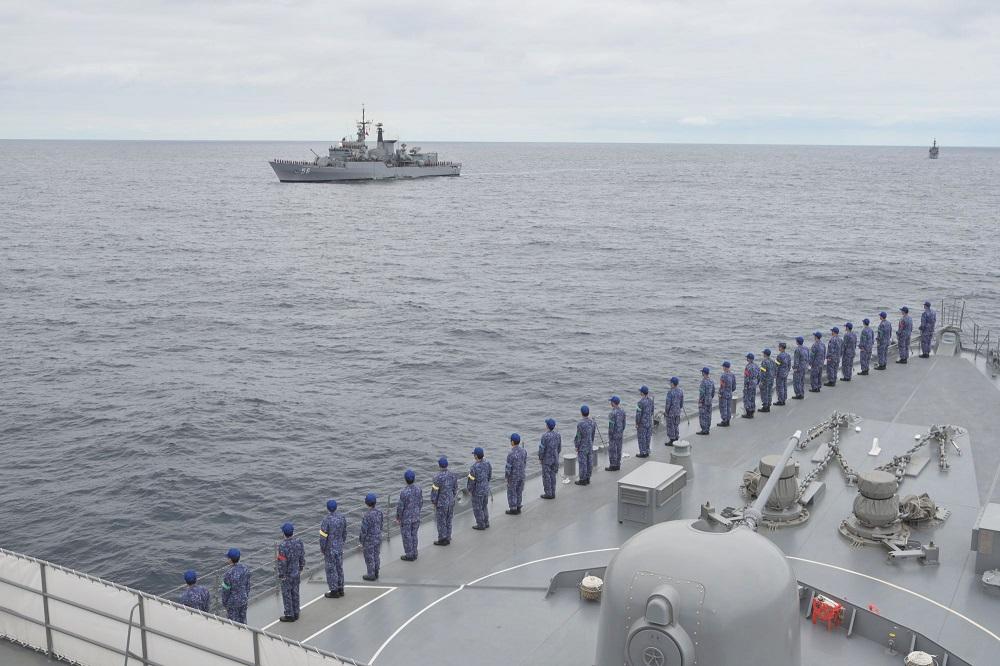
The Japanese government has initiated a new program to provide capacity-building support to foreign militaries. Tokyo’s provision of ‘official security assistance’, or OSA, has the potential to make Japan a more effective and active player in regional security.
The OSA concept first appeared in the government’s updated national security strategy in December 2022, which noted the need for ‘a new cooperation framework for the benefit of armed forces and other related organizations … in view of strengthening their security capacities and improving their deterrence capabilities’. In April, Japan’s cabinet set out guidelines for implementing specific OSA projects.
Assistance under the program will come in the form of grants and it is open only to developing nations as defined in OECD standards. OSA can be granted for three designated purposes: ensuring peace, stability and security based on the rule of law; conducting humanitarian activities; and supporting international peacekeeping efforts. The first four recipient countries in 2023 will be the Philippines, Malaysia, Bangladesh and Fiji. While more detail is still to come, these pilot cases will include, at the very least, the transfer of satellite and radio communication systems.
The program’s main policy objective is to secure the rules-based order in the Indo-Pacific region, where the line between war and peace is becoming increasingly blurred. Specifically, OSA is designed to help Japan’s partners enhance their maritime awareness, surveillance and reconnaissance capabilities. While the guidelines cautiously depict it as a policy for ‘peace’, OSA is a step forward in Japan’s capacity-building efforts for foreign militaries.
Over the past decade, Japan has gradually been removing self-imposed restrictions on defence-related activities. In 2014, Shinzo Abe’s government replaced the de facto prohibitive ‘three principles of arms export’ with the slightly relaxed ‘three principles of defence equipment transfer’ or DET. It also revised the Self-Defense Forces Law to allow used military equipment to be provided to Japan’s partners, which enabled the transfer of used TC-90 training aircraft to the Philippines.
In the wake of these reforms, Tokyo has so far signed DET agreements with 14 partners. Some of these joint development efforts for future military capabilities, such as the Global Combat Air Programme with the UK and Italy and the Australia–Japan research, development, test and evaluation agreement, were unthinkable a short while ago. Japan has also provided patrol vessels, training and technical assistance to regional coastguards that face grey-zone coercion.
However, DET has had little success, except for the transfer of surveillance radar units to the Philippines. While Japan’s overseas development assistance was widely used for capacity-building for constabulary and armed forces, its administration for strictly nonmilitary uses created inconsistencies and put constraints on the DET program.
By providing civilian, dual-use and military equipment to foreign militaries without a formal DET agreement, the OSA program can bridge this gap. Unlike in the past, partner militaries will be able to use OSA-granted equipment for defence and military purposes as long as they adhere to conditions related to information disclosure, assessment and monitoring, prohibitions on extra-purpose use, and conformity with the UN charter.
Still, there is some uncertainty about the program’s sustainability and impact. OSA is constrained by the three principles of DET, which means it can only be used to provide non-lethal equipment for rescue, transport, warning, surveillance and minesweeping. That may change; there is ongoing debate in the ruling coalition about reforming the DET principles to allow exports of lethal weapons, such as minesweepers equipped with machine guns or surveillance ships armed with weapons.
Resource mobilisation for OSA is another challenge. The program’s yearly budget is just ¥2 billion ($21 million), which is the equivalent of 0.4% of the total budget for defence transfers. Better allocation of funding and staffing exclusively for OSA will determine the policy’s impact in the coming years. Some good news is that on 11 July, the Ministry of Foreign Affairs announced that it would establish a new division to work exclusively on OSA.
Finally, a successful OSA requires coordination between the Ministry of Foreign Affairs, the Ministry of Defense and the Self-Defense Forces—especially to provide training and aftercare support for equipment and to avoid duplication of capacity-building efforts. To this end, keeping OSA so low key is unproductive. Given the strong public support for reinforcing the SDF, the government should use OSA to engage Japanese defence industry providers, which currently teeter on the edge of extinction.
Despite these challenges, OSA can be a new frontier of Australia–Japan cooperation for capacity-building with regional partners. Communication at various levels is essential, including political meetings, traditional embassy diplomacy and informal interactions. This helps to avoid duplication and maximise each government’s capacity-building efforts.
While some liberal groups in Japan have recently criticised OSA as antagonistic towards China, that argument only serves Beijing’s interests at the expense of regional partners facing China’s grey-zone coercion. OSA will be a litmus test of whether Japan can graduate from its pacifist stance to being a realistic peacebuilder and proactive contributor to ensuring a free, open and ‘secure’ Indo-Pacific region.